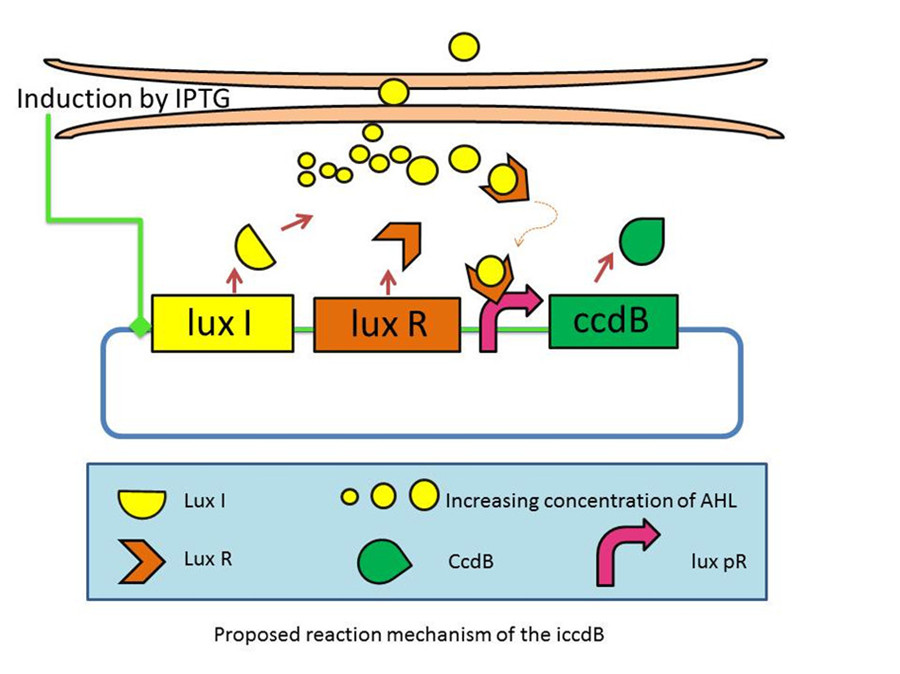Team:XMU-China/Project/Description
From 2011.igem.org
(Difference between revisions)
(→Project Description) |
(→reference) |
||
| Line 19: | Line 19: | ||
==reference== | ==reference== | ||
[1] Kempner E, Hanson F. Aspects of light production by Photobacterium fischeri[J]. Journal of Bacteriology, 1968, 95(3): 975-979. | [1] Kempner E, Hanson F. Aspects of light production by Photobacterium fischeri[J]. Journal of Bacteriology, 1968, 95(3): 975-979. | ||
| + | |||
[2] Fuqua WC, Winan SC, Greenberg E. Quorum sensing in bacteria: the luxR-luxI family of cell density-responsive transcriptional regulators[J]. Journal of Bacteriology, 1994, 176(2): 269-275. | [2] Fuqua WC, Winan SC, Greenberg E. Quorum sensing in bacteria: the luxR-luxI family of cell density-responsive transcriptional regulators[J]. Journal of Bacteriology, 1994, 176(2): 269-275. | ||
| + | |||
[3] Baldwin T, Devine JH, Heckel, RC, Lin, JW, Shadel GS. The complete nucleotide sequence of the lux regulon of Vibrio fischeri and the luxABN region of Photobacterium leiognathi and the mechanism of control of bacterial bioluminescence[J]. Journal of Bioluminescence and Chemiluminescence, 1989, 4(1): 326-341. | [3] Baldwin T, Devine JH, Heckel, RC, Lin, JW, Shadel GS. The complete nucleotide sequence of the lux regulon of Vibrio fischeri and the luxABN region of Photobacterium leiognathi and the mechanism of control of bacterial bioluminescence[J]. Journal of Bioluminescence and Chemiluminescence, 1989, 4(1): 326-341. | ||
| + | |||
[4] You L, Cox RS, Weiss R, Arnold FH. Programmed population control by cell-cell communication and regulated killing[J]. Nature, 2004, 428(6985): 868-871. | [4] You L, Cox RS, Weiss R, Arnold FH. Programmed population control by cell-cell communication and regulated killing[J]. Nature, 2004, 428(6985): 868-871. | ||
| + | |||
[5] Kampranis SC, Howells AJ, Maxwell A. The interaction of DNA gyrase with the bacterialtoxin CcdB: evidence for the existence of two gyrase-CcdB complexes[J]. Journal of Molecular Biology, 1999, 293(3): 733-744. | [5] Kampranis SC, Howells AJ, Maxwell A. The interaction of DNA gyrase with the bacterialtoxin CcdB: evidence for the existence of two gyrase-CcdB complexes[J]. Journal of Molecular Biology, 1999, 293(3): 733-744. | ||
Revision as of 12:40, 28 October 2011
 "
"


